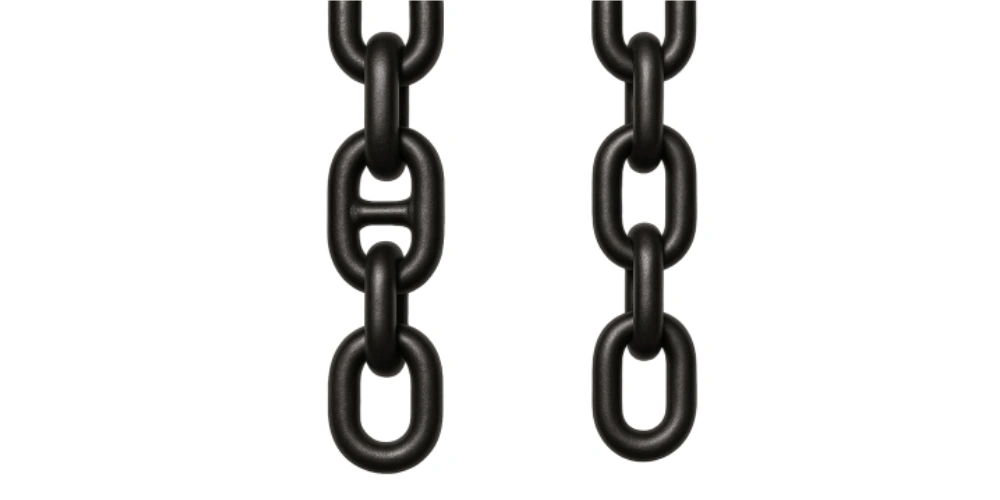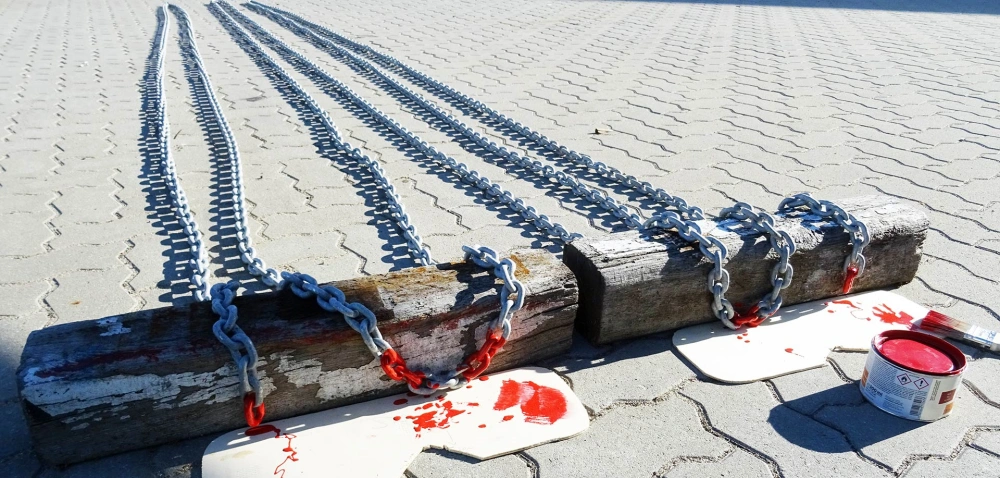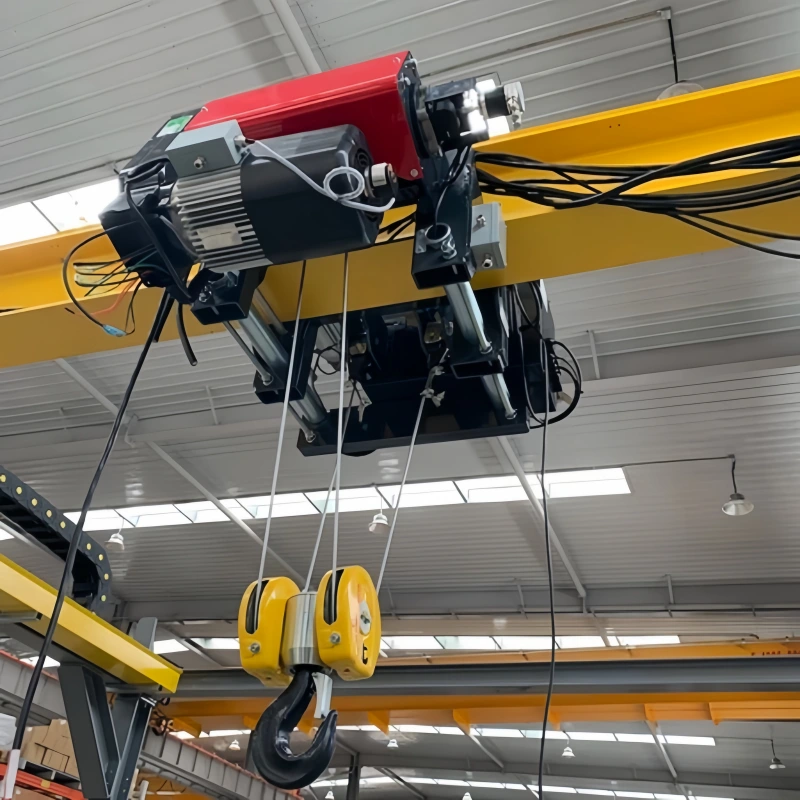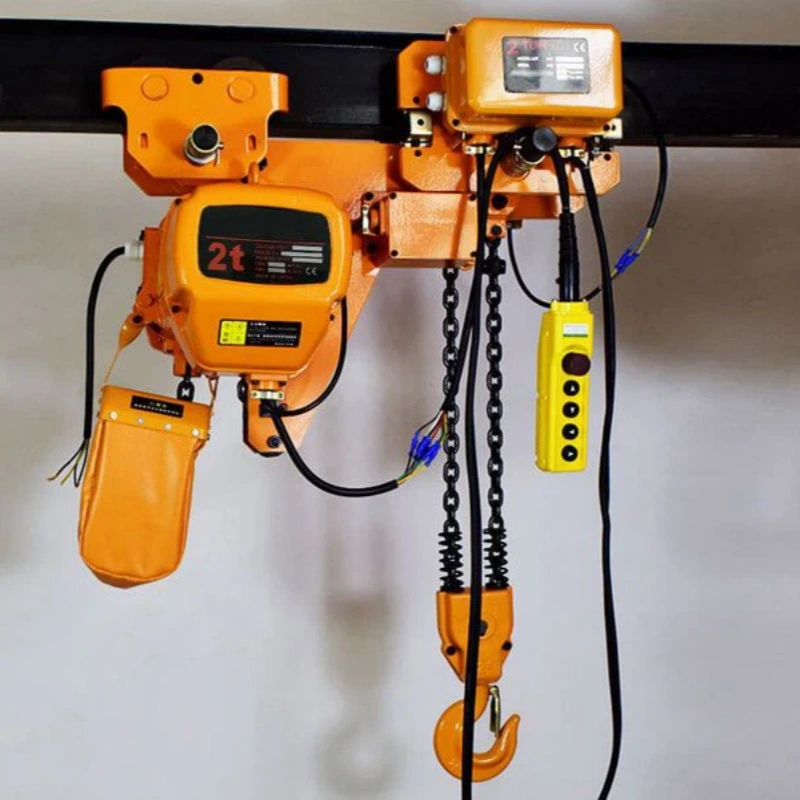You play a critical role in maintaining safety and efficiency on your vessel. Anchor chain marking gives you real-time visibility of the scope you deploy, helping you set the anchor correctly and avoid dangerous dragging. Simple techniques, like colored ribbons or zip ties, make it easy to identify how much chain you let out.
Marked chains support safe anchoring by preventing mistakes
Quick identification streamlines anchoring operations
Clear markings help you react faster in changing conditions
Key Takeaways
Marking your anchor chain enhances safety by providing clear visibility of how much chain is deployed, helping to prevent dragging.
Using traditional methods like paint or zip ties is simple, but modern options like webbing tabs offer greater durability and environmental benefits.
Regular inspection and maintenance of your anchor chain markings ensure they remain visible and effective, supporting safe anchoring practices.
Choosing the right marking interval based on your vessel’s needs improves anchoring accuracy and efficiency, especially in varying water depths.
Opt for eco-friendly marking solutions to minimize environmental impact while ensuring your anchoring system remains reliable.
Anchor Chain Basics
Anchor Chain Structure
You rely on the anchor chain to secure your vessel in all conditions. The structure of the anchor chain consists of a series of interconnected links, each designed for strength and durability.
Manufacturers use high-strength steel grades such as 20Mn or 30Mn, and sometimes galvanized or stainless steel, to ensure long service life. You will find anchor chain available in different diameters and link shapes, including stud link chain and studless designs.
Surface treatments like hot-dip galvanizing, black paint, or self-colored finishes protect the chain from corrosion. International marine standards, such as ISO 1704, specify the dimensions and tolerances for anchor chain, while GB/T 20848 and DIN standards define material and testing requirements.
Component/Material | Description |
|---|---|
Chain Links | Available as studded (with a central stud for added strength) or studless (simpler design). |
Materials | Typically made from high-strength steel grades like 20Mn or 30Mn, with options for galvanized or stainless steel finishes. |
Surface Treatments | Hot-dip galvanizing, black paint, or self-colored finishes for corrosion resistance. |
Types of Marine Anchor Chains | Studlink Chains: Feature a central stud to prevent deformation under load and reduce tangling. Studless Chains: Lighter and simpler, suitable for smaller vessels or temporary mooring. |
Manufacturing Standards | ISO 1704, GB/T 20848, DIN Standards. |
Stud Link vs Studless Chain

You must choose the right anchor chain for your vessel. The stud link chain contains a central stud in each link, which adds strength and prevents tangling during anchor deployment and retrieval.
This structure makes the stud link chain heavier and less flexible, but it offers superior performance for large vessels and commercial operations. Studless chain, on the other hand, features a simpler link design, making it lighter and more flexible.
You will find a studless chain easier to handle, especially in rough seas or for permanent moorings. The compact nature of the studless chain allows for efficient storage and reduces the risk of snagging on debris.
Feature | Stud Link Chains | Studless Chains |
|---|---|---|
Structure | Contains studs for added strength | Simpler design enhances flexibility |
Weight | Heavier due to studs | Lighter, beneficial for weight efficiency |
Flexibility | Less flexible, prone to kinking | More flexible, adapts better to the seabed |
Handling | Can tangle, complicating deployment | Easier handling, especially in rough seas |
Safety | Higher risk of snagging | Reduced snagging risk due to no studs |
Application | Common in mobile mooring systems | Preferred for permanent moorings |
You benefit from enhanced flexibility, lighter weight, and easier handling with a studless chain. Stud link chain remains the preferred choice for larger ocean-going vessels, commercial fishing boats, and super yachts due to its strength and reliability.
Powerful Machinery Anchor Chains
You can trust Powerful Machinery anchor chain for superior performance and safety. Powerful Machinery offers a full range of anchor chains, including stud link chain and studless chain, in various diameters and anchor chain grades.
You will find options in galvanized steel and AISI 316 stainless steel, suitable for harsh marine environments. Every anchor chain undergoes rigorous testing and meets international certifications such as CCS, ABS, BV, NK, KR, GL, LR, DNV, RINA, and RMRS.
Powerful Machinery anchor chain provides maximum reliability, durability, and compliance with global standards. You can select custom diameter, link type, and anchor chain grade to match your vessel’s requirements.
The company’s commitment to quality ensures your anchor chain performs in the toughest conditions.
Anchor Chain Marking

Why Mark Your Anchor Chain?
You need anchor chain marking to ensure safety and operational efficiency every time you anchor. When you mark your anchor chain, you gain immediate feedback on how much chain you have deployed. This knowledge helps you set the correct scope, avoid dragging, and respond quickly to changing conditions.
Many boaters struggle to estimate the length of anchor chain in the water, especially in low visibility or rough seas. Markings provide a visual reference, reducing guesswork and improving accuracy.
Tip: Marking your anchor rode at regular intervals allows you to deploy the right amount of chain for the water depth and conditions. This practice prevents over- or under-deployment, which can compromise holding power or risk damaging your vessel.
You also benefit from faster anchoring operations. Clear anchor chain marking lets you communicate easily with your crew, reducing errors and saving time. In emergencies, you can retrieve or deploy your anchor rode with confidence, knowing exactly how much chain remains.
Anchor Chain Marking Standards
You should follow recognized standards when you mark your anchor chain. International organizations and classification societies set guidelines to ensure consistency and safety across the marine industry. Powerful Machinery manufactures anchor chains that comply with these standards, giving you peace of mind.
Standard | Description |
|---|---|
ISO 1704 | International standard for anchor chain manufacturing and testing |
GB/T549 | Chinese National standard for marine chains |
CCS | Classification society from P.R. China |
LR | A classification society from the U.K. |
GL | A classification society from Germany |
ABS | Classification society from the U.S.A. |
DNV | A classification society from Norway |
NK | A classification society from Japan |
BV | A classification society from France |
RINA | Classification society from Italy |
KR | Classification society from Korea |
RS | A classification society from Russia |
You will find that anchor chain marking systems can differ by region or organization. For example, European chains often follow ISO 4565, while German chains use DIN 766. The US Coast Guard and CE also have their own marking requirements.
Many commercial vessels use a color-coded system at 15-fathom intervals, with colored links and detachable links to indicate each “shot” of chain. The last shot often uses yellow or red links to warn you that you are running out of chain.
Note: Powerful Machinery anchor chains meet or exceed these international standards, ensuring your equipment is reliable and compliant wherever you operate.
Anchor Chain Length and Depth Markers
You need to distinguish between length markers and depth markers when you mark your anchor chain. Length markers indicate the total length of anchor chain you have deployed, while depth markers help you match the amount of chain to the water depth for safe anchoring.
Length Markers:
You typically mark your anchor chain at regular intervals, such as every 25 or 50 feet, using colored paint, zip ties, or other visible indicators. This system helps you manage your anchor rode during deployment and retrieval. For example, you might use one color for every 25 feet, making it easy to count how much chain you have out.Depth Markers:
Depth markers allow you to adjust your anchor rode based on the actual water depth. Many boaters paint bands or attach markers at 10-meter intervals. For instance, one mark at 10 meters, two marks at 20 meters, and so on. This method gives you a quick visual cue, especially when depth sounders are unreliable.
Pro Tip: Mark key lengths on your anchor rode to match the typical depths you encounter. This approach streamlines anchoring and improves accuracy.
You will find that marking your anchor chain at regular intervals not only helps with deployment but also assists in maintenance. Regularly checking your markings ensures they remain visible and accurate, supporting safe anchoring practices.
Traditional Marking Methods
When you look for reliable ways to identify anchor chain length, you often turn to traditional methods. These approaches have stood the test of time and remain popular for their simplicity and effectiveness.
You can apply these methods to Powerful Machinery anchor chains with confidence, knowing you will maintain safety and efficiency on board.
Marking Anchor Chain With Paint
You can use a paint anchor chain as a straightforward and highly visible method to mark your chain. This method involves applying an appropriate color of paint at set intervals along the chain. You benefit from clear, easy-to-read marks that stand out in most lighting conditions.
Advantages of using paint:
You see clear visual indicators of chain length.
You find the application process simple and quick.
You can choose colors that contrast with your chain for better visibility.
Drawbacks to consider:
Paint can wear off due to abrasion as the chain moves over the windlass or seabed.
Flaking may occur, especially if you use standard paint instead of marine-grade options.
You may need to reapply paint regularly to maintain visibility.
Tip: Select marine-grade, abrasion-resistant paint for longer-lasting results. Always clean and dry the chain before painting to ensure the best adhesion.
When you mark Powerful Machinery anchor chains, you should follow these steps:
Lay out the chain on a flat surface.
Clean each section to remove salt, grease, and debris.
Apply the appropriate color of paint at your chosen intervals (such as every 10 meters or 25 feet).
Allow the paint to dry fully before stowing the chain.
You should also consider the environmental impact of your paint choice. Low-VOC and eco-friendly paints help minimize harm to marine ecosystems.
Marking Anchor Chain with Zip Ties
Another common method involves using colored zip ties to mark your anchor chain. You attach these plastic ties at regular intervals, using different colors or patterns to indicate length.
Benefits of zip ties:
You can install them quickly without special tools.
Many users report that zip ties do not fade over time.
You can easily replace or adjust them as needed.
Potential issues:
Zip ties may become brittle and break, especially after prolonged exposure to sunlight and saltwater.
Some users find it difficult to distinguish between similar colors, such as yellow and white, in low light.
Plastic zip ties can contribute to marine plastic waste if not monitored and replaced responsibly.
Note: Inspect your zip ties regularly for signs of wear or breakage. Choose UV-resistant, heavy-duty ties for better durability on Powerful Machinery anchor chains.
You can use this method by:
Selecting bright, contrasting colors for each interval.
Securing the zip tie tightly around the chain link.
Trimming excess length to prevent snagging.
You should always remove and dispose of broken ties properly to reduce environmental impact.
Shackle and Wire Markings
You may prefer a more durable method, such as using small shackles or lengths of wire to mark your anchor chain. This approach works well for long-term marking, especially in harsh marine environments.
Advantages:
Shackles and wire resist abrasion and last longer than paint or zip ties.
You can feel the markers by hand, which helps during night operations or in poor visibility.
Considerations:
Installation takes more time and may require tools.
Wire can rust if not made from stainless steel.
Shackles may catch on the windlass or chain locker if not installed carefully.
Pro Tip: Use stainless steel wire or high-quality shackles to match the corrosion resistance of Powerful Machinery anchor chains. Secure the markers tightly to prevent movement or snagging.
You can apply this method by:
Attach a small shackle or wire loop at each marking interval.
Ensuring the marker does not interfere with the chain’s movement.
Checking markers during routine inspections for signs of wear or corrosion.
Environmental Impact of Traditional Methods
You should consider the environmental effects of each marking method. The table below summarizes the main impacts:
Marking Method | Environmental Impact |
|---|---|
Traditional Paint | Choose eco-friendly, low-VOC options to reduce harm to marine life. |
Plastic Zip Ties | Durable but may add to plastic waste; inspect and replace as needed. |
Shackles/Wire | Stainless steel options minimize rust and last longer, reducing waste. |
Reflective Tape | Offers visibility and reduces the need for frequent replacement. |
Colored Rope Inserts | Provides a sustainable alternative, avoiding fading and flaking issues. |
You can select the best methods to mark chain based on your vessel’s needs, environmental considerations, and the specific features of your Powerful Machinery anchor chain. Regular inspection and maintenance of your markings ensure continued safety and reliability.
Modern and Sustainable Marking
Webbing Tabs and Eco-Friendly Options
You can choose webbing tabs as a modern, sustainable way to mark your anchor chain. These sewn fabric tabs attach securely to the links and resist abrasion from the windlass and seabed.
Unlike plastic ties or paint, webbing tabs do not flake or break down, so you avoid releasing microplastics or debris into the ocean. This protects marine life and keeps your anchoring system environmentally friendly.
Many boaters prefer webbing tabs because they can feel them in low visibility or at night. Their construction ensures they stay in place, even after repeated use. If you use stainless steel chains from Powerful Machinery, you benefit from enhanced longevity and environmental protection.
Stainless steel resists corrosion and supports sustainable marine practices.
Tip: Choose webbing tabs made from recycled or biodegradable materials for the lowest environmental impact.
Plastic and Custom Markers
You have access to a range of custom plastic markers designed for anchor chains. Modern options, like the Anchoright Chain Marking Set, use biodegradable Poly Lactic Acid (PLA) and offer secure, patent-pending designs.
You install these markers with a simple screwdriver, and they come in multiple colors for easy identification. These markers require no maintenance—just fit and forget.
Feature | Anchoright Chain Marking Set |
|---|---|
Installation | Simple, screwdriver only |
Material | Biodegradable PLA |
Color Options | Six or eight colors |
Durability | Hard-wearing, maintenance-free |
Environmental Impact | Similar to composting wood |
Customization | Guide plate for color and position |
You can also find press-in markers and color-coded sets, but some users report that these may fall out or seem expensive for the value. For example, a bag of eight color-coded chain markers costs around $22.00.
Durability and Maintenance
You want your anchor chain markings to last. Modern solutions like webbing tabs and Anchoright markers deliver excellent durability and require little to no maintenance. You avoid the frequent touch-ups needed with spray paint or the breakage common with cable ties.
Method | Ease of Application | Durability | Configurability |
|---|---|---|---|
Anchoright | EASY | EXCELLENT | EXCELLENT |
Spray paint | HARD | POOR | POOR |
Cable Ties | EASY | POOR | GOOD |
Press-in markers | EASY | POOR | POOR |
Powerful Machinery supports your commitment to quality and environmental responsibility. By choosing sustainable marking methods, you help protect the ocean and ensure your anchoring system remains reliable for years to come.
Marking Anchor Chain: Practical Tips
Preparation and Inspection
You start by preparing your anchor chain for marking. Lay out the chain on a clean, flat surface. Inspect each link for rust, wear, or damage. Remove any debris or salt buildup with fresh water and a stiff brush. This step ensures chain markers adhere properly and remain visible.
You check for weak spots that could affect safety during anchoring. Regular inspection helps you maintain the reliability of Powerful Machinery anchor chains.
Top tips:
Clean the chain thoroughly before marking.
Inspect for corrosion and replace damaged links.
Dry the chain completely to improve marker adhesion.
Measuring and Marking Intervals
You measure intervals along your anchor using a tape measure or marked rope. Accurate measurement is essential for spacing chain markers correctly. Choose intervals that match your anchoring needs, such as every 10 meters or 25 feet.
Use woven fabric markers, webbing tabs, or marine-grade paint for durability and visibility. Select bright, contrasting colors or reflective materials so you can see the markers day or night. Biodegradable or secure markers help protect the environment.
Recommended tools and materials for marking:
Woven fabric or rope markers for visibility and eco-friendliness.
Reflective tape or paint for night operations.
Webbing tabs are sewn onto the chain for long-lasting results.
Biodegradable plastic or custom chain markers for easy application.
Sharpie or paint for writing numbers at each interval.
Top tips:
Use a consistent color scheme for each interval.
Refresh faded markings regularly.
Mark deeper sections with extra care, as they contact the seabed more often.
Safety and Best Practices
You prioritize safety when marking and maintaining your anchor chain. Wear gloves and eye protection during cleaning and marking. Avoid using materials that may break down and pollute the ocean, such as low-quality zip ties.
Webbing tabs and marine-grade paint offer durability and environmental safety. Mark every 50 feet with white bands for shallow water and yellow bands for deeper sections. Write numbers on webbing or paint for easy identification.
Best practices for maintaining chain markers:
Inspect markings during routine anchor checks.
Replace worn or missing markers promptly.
Use environmentally friendly materials to minimize marine pollution.
Keep a record of your marking system for crew reference.
Top tips:
Schedule regular inspections to ensure markings remain visible.
Store extra markers and paint on board for quick repairs.
Train your crew on the marking system for efficient anchoring.
Conclusion
You have many options for marking your anchor chain. Traditional methods like spray paint and cable ties offer simplicity, but modern solutions such as Anchoright markers deliver greater durability and sustainability. See the table below for a quick comparison:
Feature | Anchoright | Spray Paint | Cable Ties | Press-in Markers |
|---|---|---|---|---|
Ease of application | EASY | HARD | EASY | EASY |
Colour range | EXCELLENT (15) | EXCELLENT | GOOD | POOR (5) |
Durability | EXCELLENT (3+ years) | POOR | POOR | POOR |
Configurability | EXCELLENT | POOR | GOOD | POOR |
Recent innovations include eco-friendly chain markers and advanced alloy materials that boost strength and corrosion resistance. You can trust Powerful Machinery to support safe anchoring with reliable, certified products. Review your marking system and upgrade for better safety and sustainability.
FAQ
How often should you check your anchor chain markings?
You should inspect your anchor chain markings every time you anchor. Regular checks help you spot faded paint, broken ties, or missing markers. Replace or refresh markings as needed to maintain safety and accuracy.
What is the best method for marking anchor chain in saltwater?
You get the best results with webbing tabs or marine-grade paint. Both options resist corrosion and abrasion. Choose materials that match your Powerful Machinery anchor chain for long-lasting performance in harsh saltwater environments.
Can you use multiple marking methods together?
Yes, you can combine paint, webbing tabs, and zip ties for extra visibility. This layered approach helps you identify chain length in different conditions. You improve reliability by using more than one marking style.
Do anchor chain markings affect chain strength?
Properly applied markings do not weaken your anchor chain. Avoid deep scratches or cuts when attaching markers. Use recommended products from Powerful Machinery to ensure your chain remains strong and safe.
How do you choose the right marking interval?
Select intervals based on your vessel size and typical anchoring depth. Many boaters mark every 10 meters or 25 feet. Consistent spacing helps you deploy the correct amount of chain for safe anchoring.


